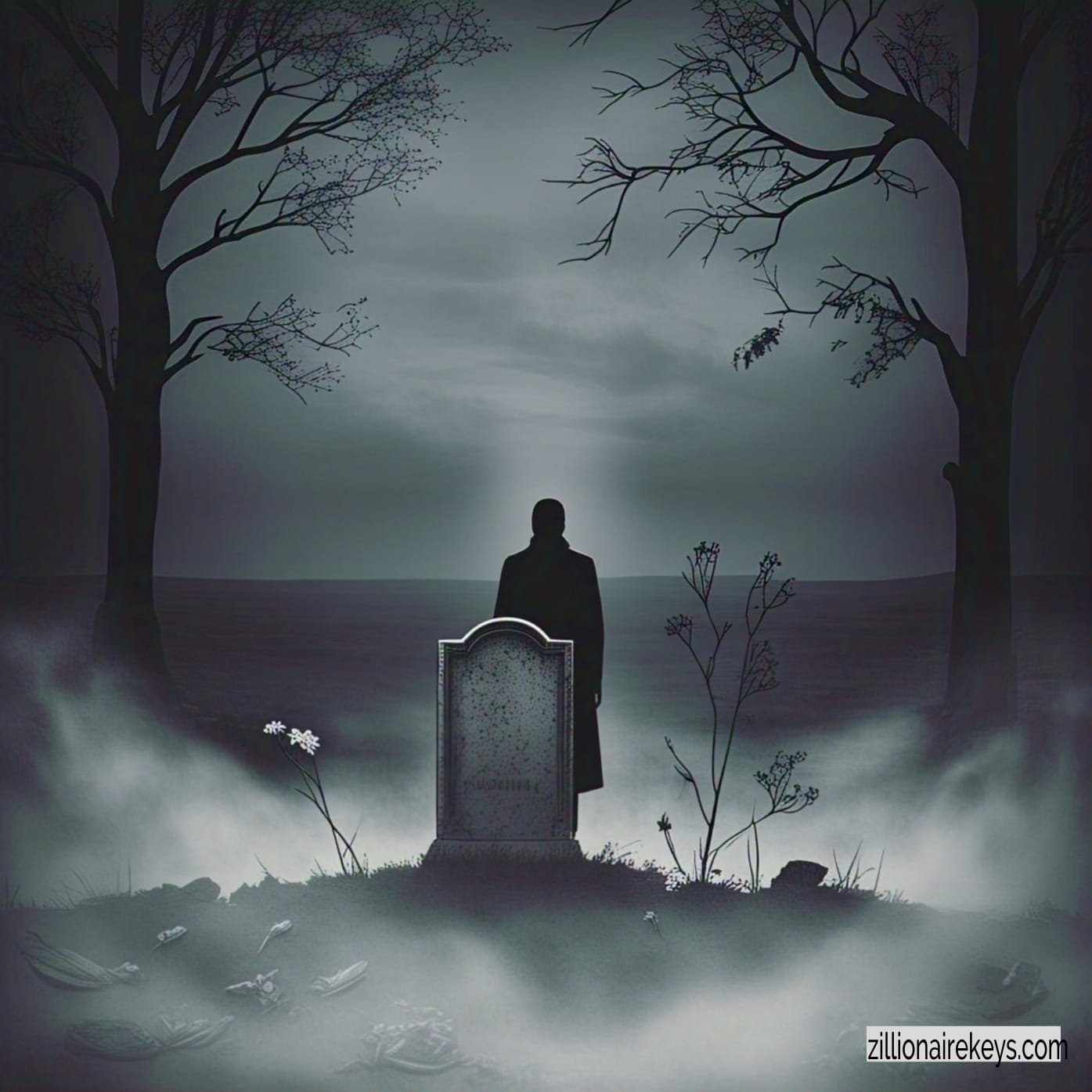Death and the grave have been subjects of fascination and mystery for centuries. Across cultures, religions, and philosophies, the concept of death and what lies beyond the grave has been explored in myriad ways. While death marks the end of our physical existence, the grave often symbolizes a final resting place or transition. But is it truly the end? In this article, we’ll explore the deeper meaning of death and the grave, the various cultural perspectives, and the idea of what lies beyond the world we know.
Understanding Death and the Grave: A Universal Experience
Death and the grave are universal experiences, impacting all human beings regardless of background, status, or beliefs. For most people, death is something to fear, but for others, it is a mystery to be embraced or understood. The grave, often seen as the final resting place, serves as a symbolic representation of this inevitable transition.
From a biological standpoint, death occurs when the body ceases to function, but the significance of death transcends the physical realm. Many religions, philosophies, and spiritual teachings emphasize the existence of an afterlife, a journey beyond the grave.
The Concept of the Soul and the Afterlife
One of the most common beliefs surrounding death and the grave is the idea of the soul. According to numerous religious and philosophical traditions, death is not an end, but a transition from the material world to the spiritual. In Christianity, for example, it is believed that the soul ascends to Heaven or descends to Hell, based on one’s actions during life. Similarly, in Hinduism, death is seen as the soul’s liberation from the physical body, and the cycle of rebirth is governed by karma.
In some traditions, the journey beyond the grave is seen as a purification process. The soul may pass through various stages of judgment or reincarnation before reaching ultimate enlightenment or peace.
The Grave: A Symbol of Finality and Transition
The grave itself, while often seen as a symbol of finality, also serves as a symbol of the transition between life and death. In many cultures, elaborate burial rituals are performed to ensure that the deceased’s soul is properly guided to the afterlife. These rituals can involve prayers, offerings, or even the construction of elaborate tombs, as seen in the ancient Egyptian pyramids.
For the living, the grave acts as a place for remembrance and reflection. Visiting the grave of a loved one allows us to honor their memory, marking their physical departure but acknowledging their ongoing presence in our hearts. In this sense, the grave is not simply a burial site, but a space where life and death converge.
The Role of Religion and Culture in Understanding Death and the Grave
Death and the grave hold distinct meanings in different religious and cultural contexts. The beliefs surrounding the afterlife and burial practices vary significantly across cultures, each offering unique perspectives on what happens after we leave this world.
Christianity: Resurrection and Eternal Life
In Christianity, death is not the end, but rather a passage to eternal life. Christians believe in the resurrection of the body and the soul’s immortality. The grave is seen as a temporary resting place for the body, but Christians hold the belief that, through faith in Jesus Christ, they will experience eternal life in Heaven. The idea of resurrection after death is a central tenet of Christian doctrine, as illustrated in the Bible when Jesus himself was resurrected from the grave.
Hinduism: Reincarnation and Liberation
Hinduism presents a unique perspective on death and the grave with its concept of reincarnation. The soul is believed to undergo a cycle of birth, death, and rebirth, depending on one’s actions (karma) in past lives. The grave, therefore, is not a permanent resting place but rather a temporary phase in the soul’s journey. Eventually, the soul seeks moksha, or liberation, escaping the cycle of reincarnation to unite with the divine.
Islam: Judgment Day and the Eternal Journey
In Islam, death is seen as the transition to the afterlife, where the soul is judged by Allah. The grave is not seen as the final destination but as a resting place until the Day of Judgment. On this day, everyone will be resurrected, and their deeds in life will determine their ultimate fate, either in Heaven or Hell. The concept of the grave in Islam is significant, as it is seen as the first step in the journey toward the afterlife, where the soul undergoes an examination of its earthly life.
Buddhism: Nirvana and the Cycle of Samsara
Buddhism, like Hinduism, believes in the cycle of birth, death, and rebirth. However, the ultimate goal in Buddhism is to break free from this cycle, known as samsara, and attain nirvana — a state of enlightenment and liberation from suffering. In this context, death and the grave are seen as part of the journey toward reaching nirvana, and death is viewed as a natural step in the process of spiritual evolution.
The Psychological Perspective: Accepting Death and Embracing Life
From a psychological perspective, death and the grave often represent the final frontier of human fear and uncertainty. The fear of death, or thanatophobia, is common, with many individuals struggling to come to terms with their own mortality. This fear can lead to anxiety, depression, and a sense of existential dread.
However, many psychologists argue that acceptance of death can lead to a more fulfilling life. The idea that death is inevitable can serve as a reminder to live with purpose and intention. By acknowledging our mortality, we are encouraged to appreciate the present moment and live more fully, knowing that time is precious.
Existentialism and the Meaning of Life
Existential philosophers such as Jean-Paul Sartre and Albert Camus emphasized the importance of confronting death in order to find meaning in life. In their view, life does not have inherent meaning, and it is up to each individual to create their own sense of purpose. Death, in this context, serves as a motivator to live authentically and embrace the uncertainties of existence.
What Lies Beyond the Grave? The Mystery of the Afterlife
The question of what lies beyond the grave is one of humanity’s oldest and most profound inquiries. Whether through religion, philosophy, or personal experience, the journey beyond death remains an enduring mystery.
Near-Death Experiences and Evidence of the Afterlife
Throughout history, there have been numerous accounts of near-death experiences (NDEs), where individuals report vivid visions or sensations of an afterlife. While these experiences are often subjective, some believe they offer a glimpse into what awaits beyond the grave. Many NDE survivors describe feelings of peace, encounters with deceased loved ones, or a sense of moving toward a light, which they interpret as a sign of an afterlife.
While scientific evidence for life after death remains elusive, these personal experiences continue to spark debates about the nature of consciousness and the possibility of existence beyond death.
The Role of Spirituality in the Afterlife
For many, spirituality offers the most comforting explanation for what happens after death. Spirituality often emphasizes the idea that the soul is eternal, continuing its journey after the body has decayed. Whether it is through reincarnation, resurrection, or union with the divine, spiritual teachings provide a framework for understanding the journey beyond the grave.
Conclusion: Death and the Grave as Part of the Human Journey
Death and the grave represent not only the physical end of life but also a profound symbolic journey. Across cultures and belief systems, death is seen as a transition, not an end, and the grave serves as both a final resting place and a passage to something beyond. The mystery of what lies beyond the grave remains one of humanity’s greatest existential questions, but the beliefs surrounding it offer comfort, hope, and meaning for countless individuals.
As we contemplate our own mortality, we are reminded to live fully, appreciate our time, and explore the deeper mysteries of existence. Whether through religious teachings, philosophical inquiry, or personal experience, death and the grave remain a crucial part of the human condition — a journey beyond the world we know, leading into the unknown.




